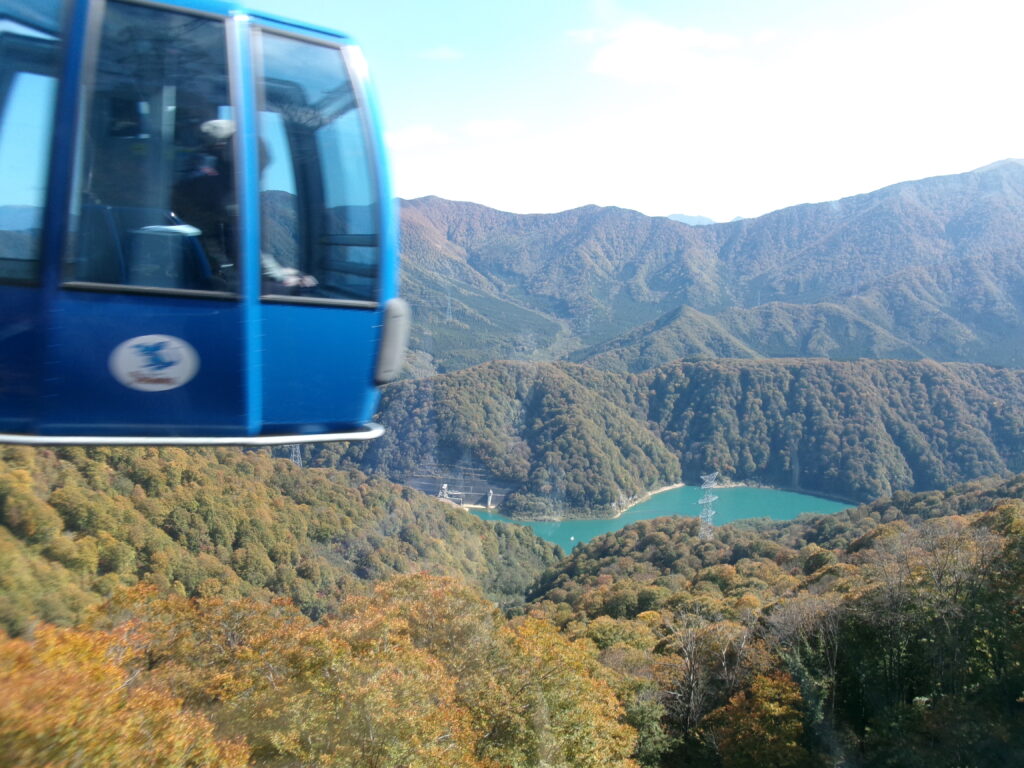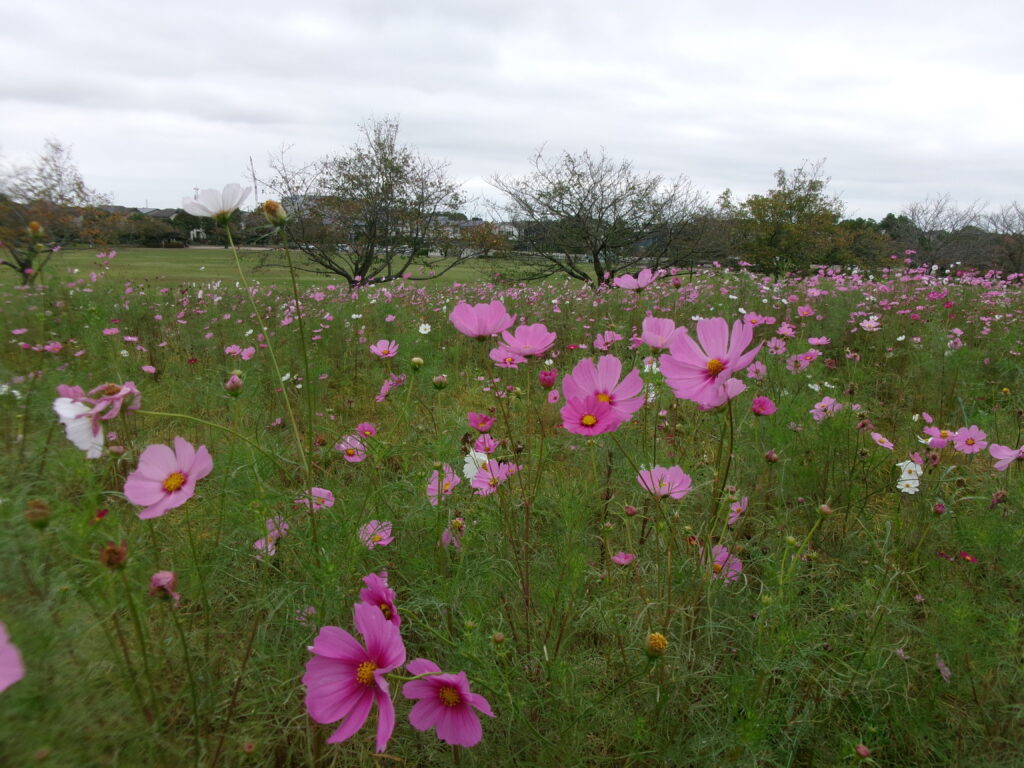NHKの朝ドラ「ばけばけ」を楽しく見ている(オープニングのハンバート ハンバートの曲も歌もいい)。これはドラマなので、実際の史実との違いなど気にする必要はないのだが、これから小泉八雲(ハーン)が出てくるというので、私としては、小泉八雲と夏目漱石の関係のことが気になる。江藤淳が夏目漱石論の中で、小泉八雲が学生に英語や英文学を教えるのに感性や情緒を重んじ、夏目漱石は文法や論理性を重視した違いに言及し、教育者としての小泉八雲のことをかなり辛辣に書いていたのを思い出す。そのことを生成AIに聞いてみた。以下その回答を添付する(ただし、この分野に関して私は無知なので、生成AIの回答がどこまで正しいのかわからない)。
投稿者: takeuchi
秋の紅葉を楽しむ
暑い夏が9月まで続き、10月になると急に温度が下がって、はや紅葉の季節。お花見と同様、紅葉もピッタリの時期に行くのが難しい。早く行き過ぎるとまだ葉が青々としていて、遅く行くとうらぶれた葉ばかり見るようでがっかりする。その紅葉のピークが、年により変わる。また場所やその高度により違っているので見極めが難しい。1週間でガラッと変わってしまう。
今年は10月22日が車での移動日で、23日の午前中に苗場のゴラゴンドラに乗って(写真1,2)、高所(田代)の紅葉(ゴンドラの中頃まではまだ色づいていなかったが)を楽しんだ(同3,4)。24日は水上の谷川岳ロープウェイ駅から谷川岳の一の倉沢(5)が見えるところまで歩いた。ここは紅葉の時期本当にきれいな紅葉が見れるのだが、今回は1週間早すぎたようだ(6)。25日は、沼田から片品、丸沼高原のロマンチック街道を経由して奥日光を目指した。ここは高度が高く木々は紅葉しているようであったが霧が深く、周囲は真っ白で何も見えなかった。霧が晴れた奥日光の戦場ヶ原の景色(紅葉)はなかなか見事であった。日光湯本(7)と竜頭の滝(8)はちょうど紅葉真っ盛りで、道路の周囲の木々の紅葉は綺麗で雨の中多くの見学者がいた。帰りのいろは坂は紅葉はこれからという感じで、渋滞はなかった。このように、今回は苗場(田代)→水上(谷川岳)→奥日光(日光)と3泊4日で、ゴンドラやリフトに乗り、かなりの高低差を歩き、熊の出没も気にしながら、紅葉のいろいろな程度を楽しむことができた。
今日(26日)の朝日新聞の朝刊に、日本人が紅葉を楽しむ理由として、次のように書かれていた。 私も同じように感じ、自分の平凡さを確認した次第。<日本は狭い場所にたくさんの種類の木が植えられ、彩りを楽しめます。常緑針葉樹のスギやヒノキなどの緑と紅葉の赤色との対比も見られ、日本の山には目に訴えかけるインパクトがあるように思います。 さらに、山が多いため、立体的に見えて奥行きがあり、平坦な土地よりも紅葉が楽しめる地形になっていると思います。」(本間篤史)

印西牧の原公園へコスモスを見に行く
今日は秋の花、コスモスが見たくなり、千葉ニュータウンの一角に印西牧の原公園にコスモスを見に行った。家から車で40分ほどのところにあり、30年くらい前に一度訪れた記憶がある。あまり期待はしていなかったが、思ったより広大な範囲に色とりどりの背の高いコスモスが、風に揺れ咲いていて、十分楽しめた。それを見に来ている人は一桁ほどで、静かな見学になった。そこは、印西牧の原駅から徒歩5分の所にある公園で、その周辺には、広い敷地に大型の店が点在していて、道路も広く、筑波の学園都市やアメリカの都市郊外のショッピングモールに雰囲気が似ている感じがした。入った「ジョイフル本田」は日本で一番大きいとのことで、菊、ダリヤそしてビオラの鉢植えと肥料を購入した。庭用の6帖のロフト付きのログハウスが安く、購入したくなった。次に行った「スポーツデポ」では、テニスラケットやテニスウェヤが買いたくなったが我慢して、ラケットのグリップテープとバランサーを買うにとどめた。平日のせいもあるのかもしれないが、どこも広い駐車場には車は少なく、店に入っている人も少なく、これで採算は合うのか、存続できるのか心配になった。(コスモスの写真は下記参照)

年金生活者の生活は豊かになっているのか
私の年齢になると退職し、収入は年金だけという人が多い。年金も物価の上昇に合わせて上昇しているのだと思うが、生活は豊かになっているのであろうか。それを生成AIに聞いてみた。結論は、「年金給付者にとっても、名目上は年々引き上げられてきたものの、物価上昇との兼ね合いで実質価値は必ずしも『豊か』になっているとは言い切れない面があります」という常識的な回答であったが、細かくいろいろ考慮すべき要因を挙げてくれた。参考にして考えてみたい。(その回答を下記に添付)
外国籍の子どもに対する日本語教育のあり方に関して
人口減少が続いている日本において、外国から労働者が流入し、その子どもが日本の学校に通い、その子たちに日本語教育を提供する必要が出ている。外国語で育ってきた子どもが、日本語を学ぶ際にどのような困難があるのか、その教育はどのように行われるべきなのか。
以前に、中国籍の子どもが4割近く在籍している千葉市の高浜小学校を、敬愛大学の学生と一緒に見学する機会があり、また千葉市の小中学校の外国籍の児童生徒の教育に関する連絡協議会にも参加させていただいたことがある。しかし、私はこの分野のこと(特に日本語をどのような教えるべきかということ)に関して全く無知で、知り合いの研究者と議論しても、全く歯が立たない。そこで例により、この分野のことを生成AI(チャトGPT)に尋ねたみた。正しいことを言っているのかわからないが、この分野の概略は、少し理解した。以下、その回答の転載する。